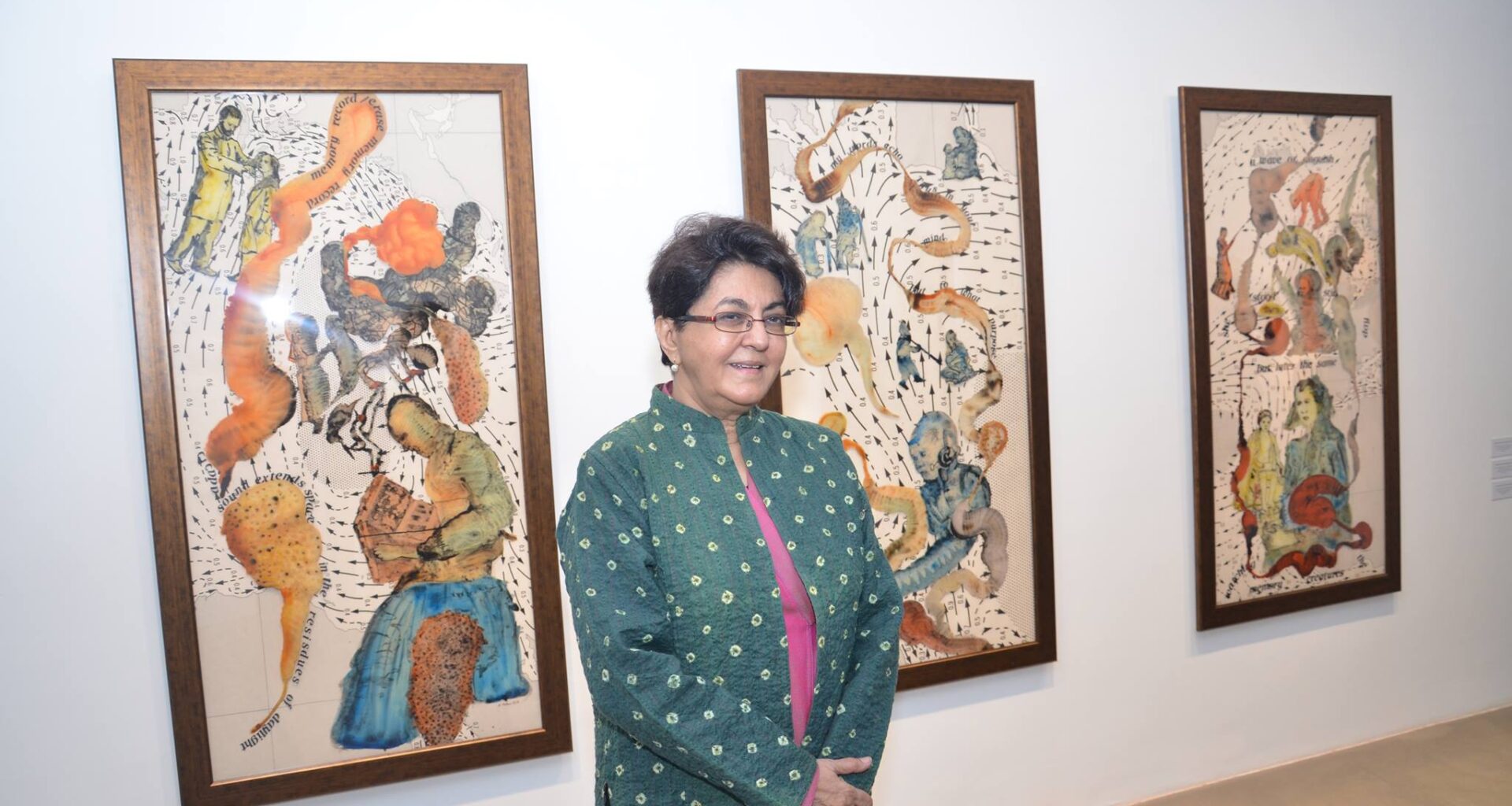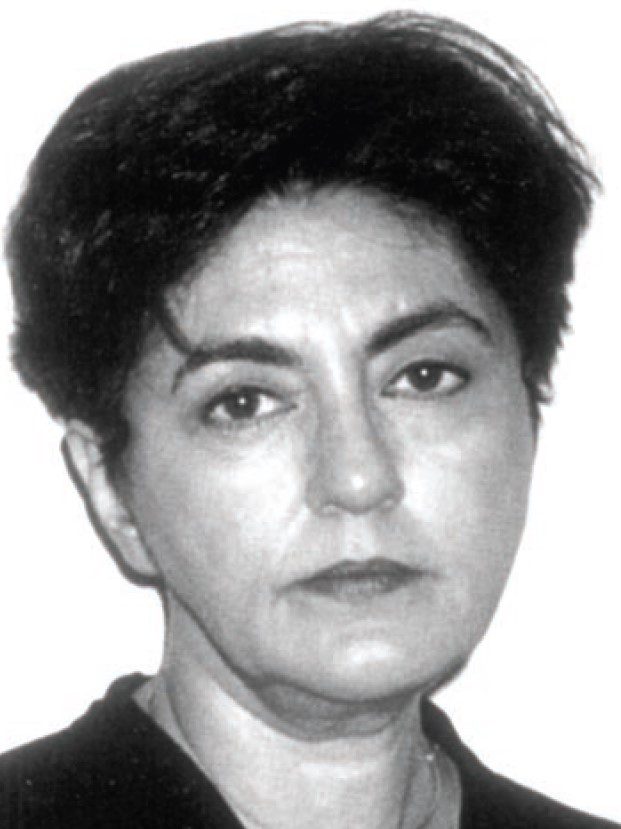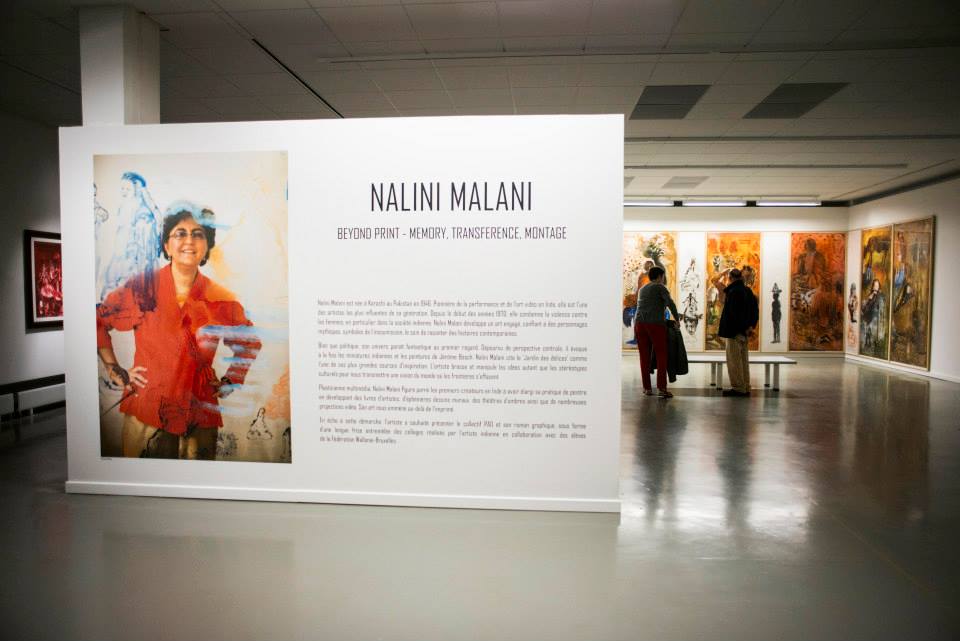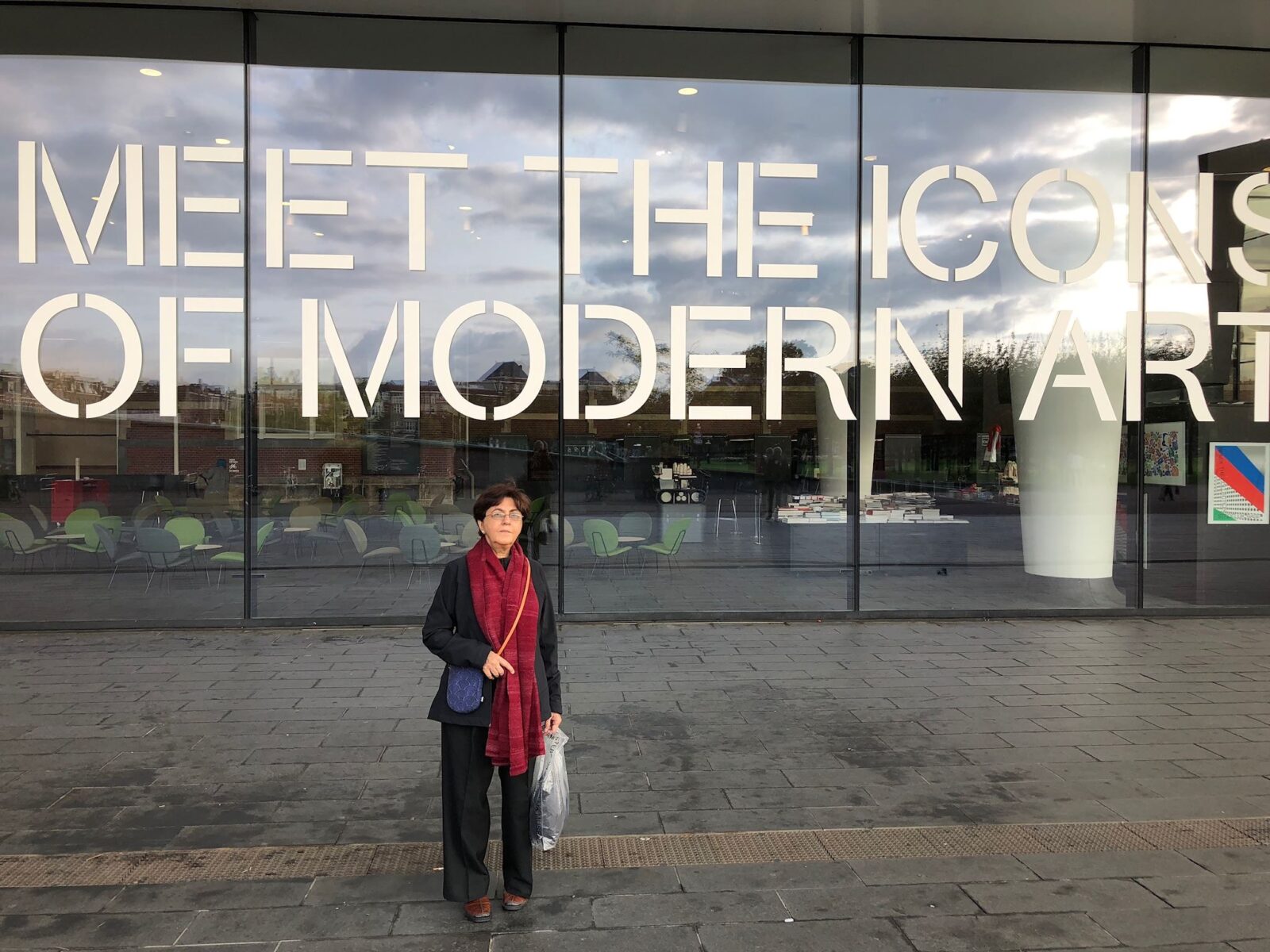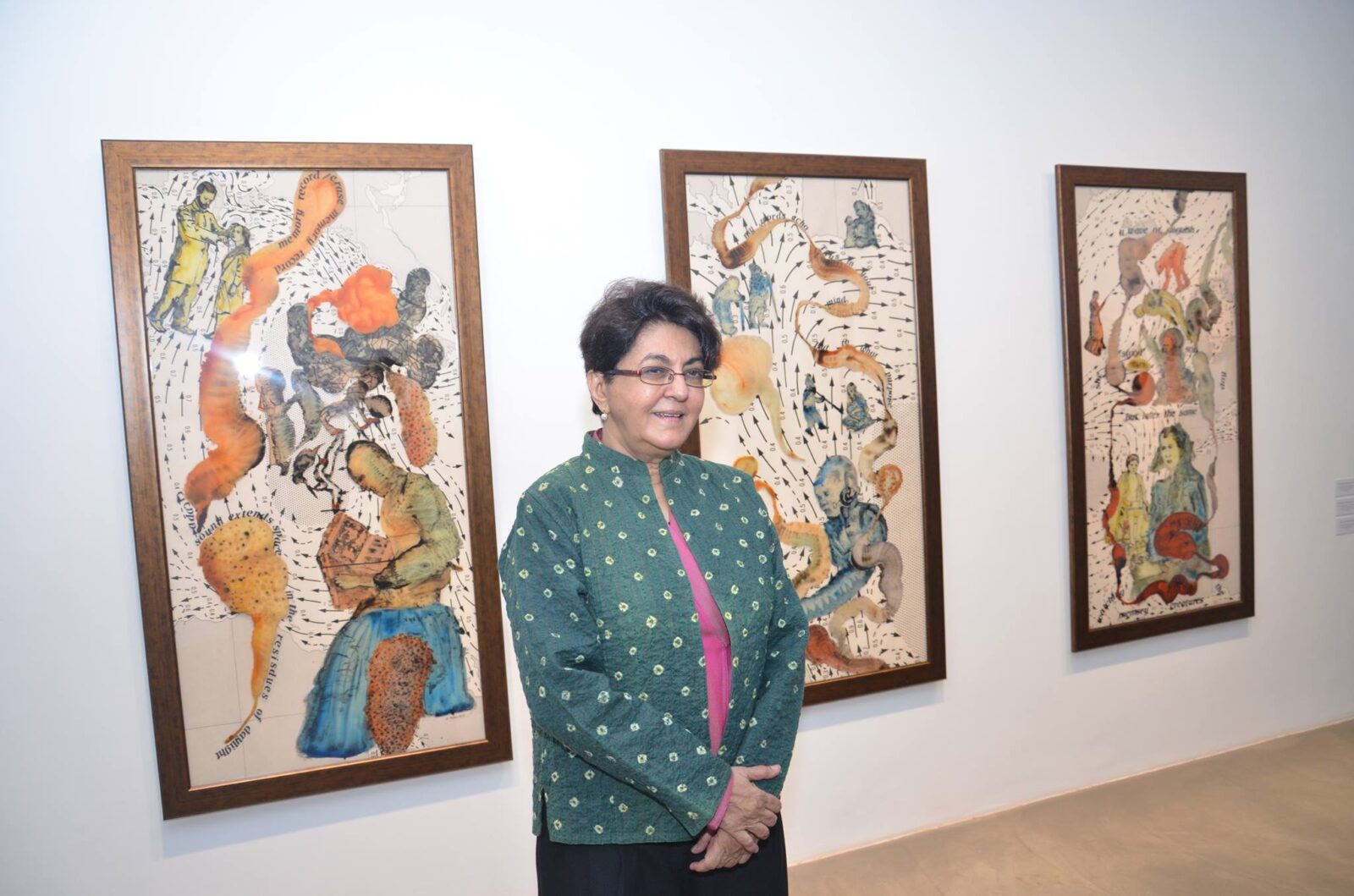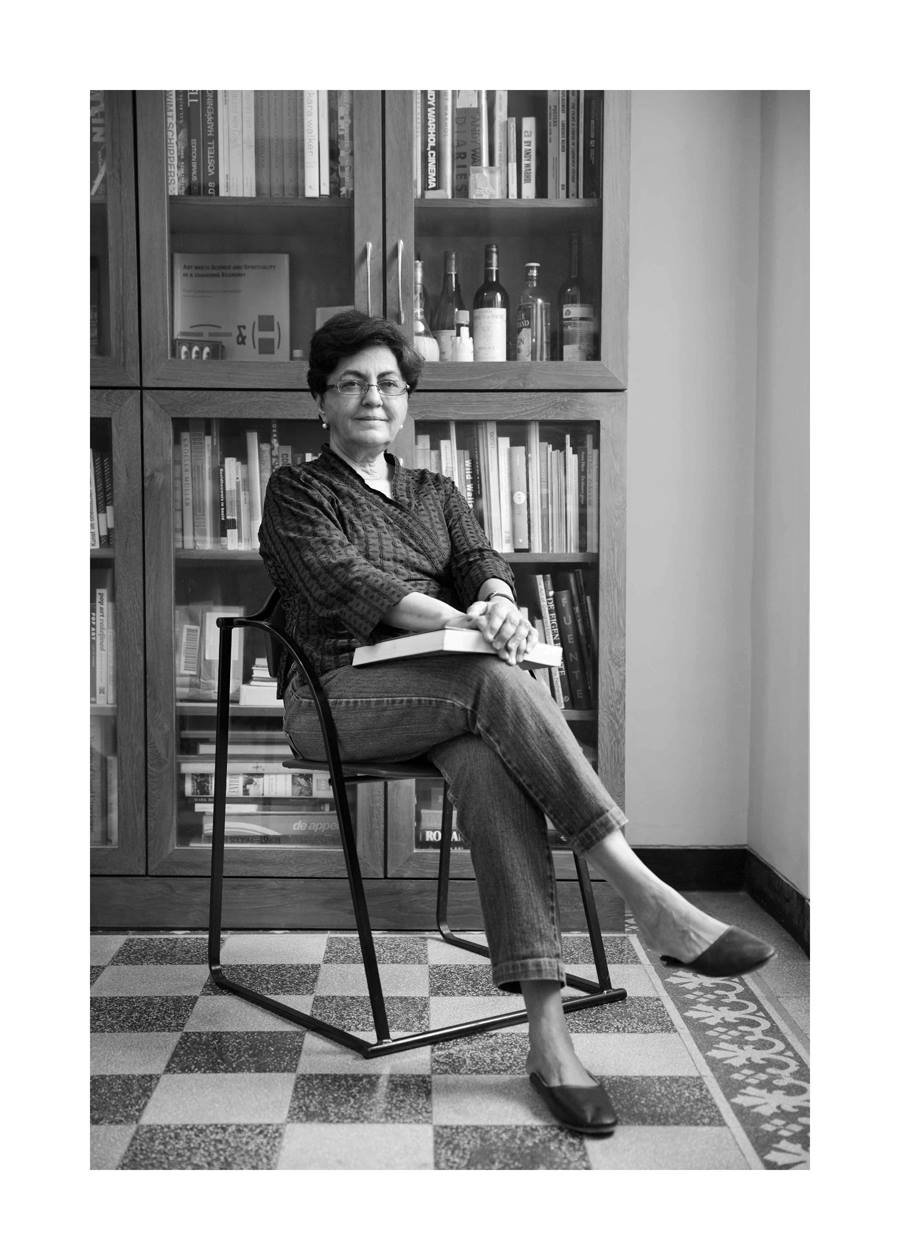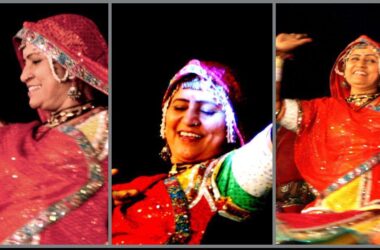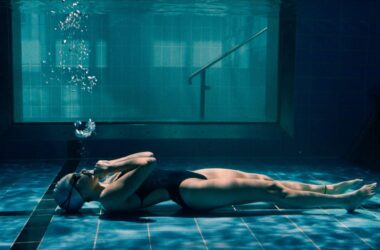Nalini Malani
Nalini Malani is a contemporary Indian craftsman broadly recognized to be among the country’s original of video specialists. She works with a few mediums which incorporate theater, recordings, establishments alongside blended media compositions and drawings. The subjects of her manifestations are profoundly impacted by her experience of relocation in the repercussions of the segment of India. Thusly, squeezing women’s activist issues have likewise turned into a piece of her innovative result. Malani has developed a visual language that is notable, moving from stop movement, deletion livelinesss, switch compositions and most as of late to computerized livelinesss, where she draws straightforwardly with her finger onto a tablet. Malani made her most memorable video work ‘Dream Houses’ (1969), as the most youthful and just female member of the Vision Trade Studio (VIEW), a trial multi-disciplinary craftsman studio in Bombay (Mumbai) by late craftsman Akbar Padamsee. Her works have been displayed at prestigious exhibition halls across the world, remembering the Stedelijk Gallery for Amsterdam and the Historical center of Present day Craftsmanship in New York.
Early life and education
Malani is the lone offspring of Satni Advani (Sindhi Sikh) and Jairam Malani (Theosophist). Brought into the world in Karachi(Sindh) in what was then English India (presently Pakistan) in 1946, Malani’s family looked for shelter in India during the segment of India. They moved to Kolkata (then Calcutta), where her dad worked with Goodbye Airlines(later Air India) and migrated to Mumbai in 1954, where they resided in a state worked for dislodged Sindhis. Her family’s insight of abandoning their home and becoming displaced people profoundly illuminates Malani’s craftsmanships. Malani concentrated on Expressive arts in Mumbai and got a Recognition in Expressive arts from Sir Jamsetjee Jeejebhoy School of Workmanship in 1969. From 1964-67, she had a studio at the Bhulabhai Desai Dedication Foundation, which used to be situated at Break Treats, Mumbai (then, at that point, Bombay), where craftsmen, performers, artists and theater people worked exclusively and all in all. It was here that she had the potential chance to meet and team up with craftsmen from partnered types of creative practice like theater. She got a grant from the French Government to concentrate on expressive arts in Paris from 1970 to 1972. She was likewise a beneficiary of two grants from the Public authority of India, as well as an award in 1989 for movement and work in the US.
Career
After her graduation, she put in a couple of years working with photography and film. The topics she investigated during this period managed the tempestuous time that India was encountering strategically and socially, also the developing proficiency of moving picture by its populace. In the underlying piece of her profession, Malani for the most part centered around artworks – acrylic on material and watercolor on paper. She created a sensible socially based depiction of Contemporary India. She kept on investigating strategies like the converse artistic creation strategy (educated to her in the last part of the 80s by Bhupen Khakhar), which she would repetitively use in her future work. She was frustrated with the absence of affirmation that ladies specialists needed to look in India and set out to unite them for a gathering show to advance the feeling of fortitude. In 1985, she arranged the main presentation of Indian female craftsmen, in Delhi. This prompted a progression of voyaging presentations that were taken to public spaces as an endeavor to go past the elitist climate of the workmanship display. The partisan viciousness that hit India in the mid 1990s after the destruction of the Babri Masjid set off an unexpected change in her craftsmanship. The restored strict clash that had demonstrated to be repeating (bringing back recollections of the Parcel) pushed her imaginative undertakings past the limits of the surface and into space. Her prior introduction to execution workmanship and her strong fascination with Writing carried new aspects to her craft. She is frequently counted among the earliest to change from customary composition to new media work. In 2013, she turned into the primary Asian lady to get Human expression and Culture Fukuoka Prize for her “steady spotlight on such trying contemporary and general subjects as strict clash, war, mistreatment of ladies and natural annihilation.”
Notable works
For two-layered works, she utilizes both oil artistic creations and watercolors. Her different motivations are her dreams from the domain of memory, legend and want. The fast brush style inspires dreams and dreams. Malani’s video and establishment work permitted her to move from rigorously genuine space to a mix of genuine space and virtual space, creating some distance from stringently object-based work. Her video work frequently references divisions, orientation, and cyborgs. Malani roots her way of life as female and as Indian, and her work may be perceived as a way for her character to defy the remainder of the world. She frequently references Greek and Hindu folklore in her work. The characters of ‘obliterated ladies’ like Medea, Cassandra and Sita highlight frequently in her story. Her diverse oeuvre can be extensively ordered under two classifications; Her trials with visual media and the moving picture like Perfect world (1969-1976), Mother India (2005), Looking for Evaporated Blood (2012); Her fleeting and in-situ works like City of Wants (1992), Medea as Freak (1993/2014), The Tables have turned (2008). Despite the fact that her work discusses viciousness and struggle, her fundamental aim is aggregate therapy.
Dream Houses (1969)
Malani’s most memorable exploratory film made at the spearheading Vision Trade Studio (VIEW) — the brainchild of late craftsman Akbar Padamsee — drew motivation from idealistic present day Indian design. Made utilizing state of the art visual gear accessible at the Studio, it includes an interesting utilization of a cardboard maquette, different light sources, essential variety channels, and a Mamiyaflex camera. For this way breaking work, Malani drew on the ‘philosophical conceivable outcomes of current engineering’, shifting focus over to crafted by eminent draftsmen Charles Correa and Buckminster Fuller, and mixing in her learnings from Johannes Itten’s variety hypotheses alongside Moholy-Nagy’s Vision Moving.
“The subject of Dream Houses is the idealism and hope that modernism brought during the Nehruvian period, in which poverty and housing problems in modern India could be solved through a master plan for urban space.” — Nalini Malani
‘Dream Houses’ was shown at the Kiran Nadar Museum of Art (KNMA) (2014), the Goethe Institute, Mumbai, (2019) and the MoMa, New York,(2022), after being ‘lost’ for over 50 years.
Unity in Diversity (2003)
Malani’s 2003 video play, Unity in Diversity, is based on the renowned 19th century Indian painter Raja Ravi Varma’s Galaxy of Musicians, with the overt theme of nationalistic unity displayed through the garb of eleven musicians from different parts of India seemingly playing in harmony. Malani makes a statement on this idealized version of unity by incorporating later histories of violence into that image.
Mother India (2005)
The video installation was inspired by an essay by the sociologist Veena Das titled “Language and Body: Transactions in the Construction of Pain”. It is a synchronised five screen wall-to-wall projection combines archival footage with poetic and painterly image to tell the story of how Indian Nationalism was built using the bodies of women as metaphors for the nation. The work speaks of women as “mutant, de-gendered and violated beyond imagination.” The Partition of India and the Gujarat Riots of 2002 are the central events that are referenced in this installation, as there was a sharp increase in the violation of women in these periods.
In Search of Vanished Blood (2012)
This installation which was first produced for the 13th edition of Documenta consists of five larger rotating Mylar cylinders (metaphorically referring to Buddhist prayer wheels) reverse painted with images of soldiers, animals, gods and guns. The shadow play caused by this rotation tells the story of senseless bloodshed especially narrating the story of India since the partition and highlighting the plight of the dispossessed/tribal communities whose lives are drastically affected by developmental decisions made by the government.
Exhibitions
- 1993 – Medea, Goethe-Institut Max Mueller Bhavan, Bombay (now Mumbai), India
- 1996 – Medea, Goethe-Institut Max Mueller Bhavan, Mumbai, India
- 1997 – The Job, Goethe-Institut Max Mueller Bhavan, Mumbai, India
- 1999 – Remembering Toba Tek Singh, Prince of Wales Museum (now Chhatrapati Shivaji Maharaj Vastu Sangrahalaya), Mumbai, India
- 2002 – Hamletmachine, New Museum of Contemporary Art, New York, USA
- 2005 – Exposing the Source: The Painting of Nalini Malani, Peabody Essex Museum, Massachusetts, USA
- 2007 – Nalini Malani, Irish Museum of Modern Art, Dublin, Ireland
- 2009 – Nalini Malani, Govett-Brewster Art Gallery, New Plymouth, New Zealand
- 2010 – Splitting the Other, Musée Cantonal des Beaux-Arts, Lausanne, Switzerland
- 2012 – Mother India: Videoplays by Nalini Malani, Art Gallery of New South Wales, Sydney, Australia
- 2013 – Listening to the Shades, Centre de la Gravure, La Louvière, Belgium
- 2013 – Listening to the Shades, Dr Bhau Daji Lad Mumbai City Museum, Mumbai, India
- 2014 – You can’t keep Acid in a Paper Bag, Kiran Nadar Museum of Art, New Delhi, India
- 2014 – In Search of Vanished Blood, co-commissioned by Edinburgh Art Festival and 14-18 Now, WW1 Centenary Art commissions, Scottish National Gallery of Modern Art, Edinburgh, United Kingdom
- 2014 – Engadiner Museum, St. Moritz, Switzerland
- 2014 – Transgressions, Asia Society Museum, New York, USA
- 2015 – Stories Untold, Institute of Contemporary Art Indian Ocean, Port-Louis, Mauritius
- 2016 – In Search of Vanished Blood, Institute of Contemporary Art, Boston, USA
- 2017 – Transgressions, Stedelijk Museum, Amsterdam, Netherlands
- 2017/18 – The Rebellion of the Dead: Retrospective 1969-2018 Part I, Centre Pompidou, Paris, France
- 2018 – The Rebellion of the Dead: Retrospective 1968-2018 Part II, Castello di Rivoli, Turin, Italy
- 2019 – Can You Hear Me?, Goethe Institut Max Mueller Bhavan, Mumbai, India
- 2020 – The Witness, Dr. Bhau Daji Lad Mumbai City Museum, Mumbai, India
- 2020 – You Don’t Hear Me, Miró Foundation, Barcelona, Spain
- 2020 – Can You Hear Me?, Whitechapel Gallery, London, UK
- 2020 – Utopia!?, Serralves Museum of Contemporary Art, Porto, Portugal
- 2021 – Can You Hear Me?, Centro de Arte Contemporáneo de Málaga, Spain
Through the Looking Glass
From 1987 – 89, Malani coordinated ‘Into another world with her peers, the ladies craftsmen Madhvi Parekh, Nilima Sheik, and Arpita Singh. The display, highlighting works by every one of the four specialists, made a trip to five non-business scenes across India. Roused by a gathering in 1979 with Nancy Spero, May Stevens and Ana Mendieta at the AIR Display in New York (the first all-female specialists’ helpful display in quite a while), Malani had wanted to coordinate a show completely of works by ladies craftsmen, which neglected to emerge because of indifference and backing.
Reception
Awards
- 1970-72: French Government Scholarship for Fine Arts Study in Paris
- 2010: Honorary Doctorate in Fine Arts, San Francisco Art Institute, USA
- 2013: Fukuoka Arts and Culture Prize for Contemporary Art, Fukuoka, Japan
- 2014: St. Moritz Art Masters Lifetime Achievement Award, St. Moritz, Switzerland
- 2016: Asia Arts Game Changer, Asia Society, Hong Kong
- 2019: Joan Miró Prize, Fundació Joan Miró, Barcelona, Spain
Fellowships
- 1984-89: Art Research Fellowship, Government of India
- 1989: USIA Fellowship, Fine Arts Work Center, Provincetown, Massachusetts, USA
- 2020: Contemporary Fellowship, National Gallery, London, UK
Residencies
- 1988: Kasauli Art Centre, Kasauli, India
- 1999: Lasalle-SIA, Singapore
- 1999-2000: Fukuoka Asian Art Museum, Fukuoka, Japan
- 2003: Civitella Ranieri, Umbertide, Italy
- 2005: Lucas Art Residencies, Montalvo, California, USA







